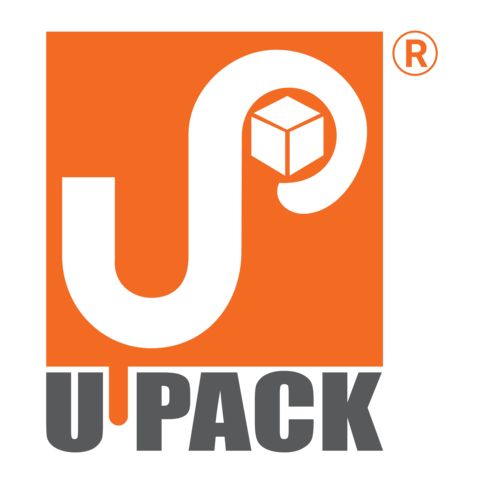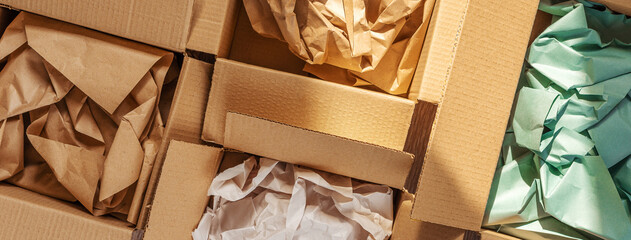The Ultimate Guide To Packaging Materials: Everything You Need To Know
The Ultimate Guide To Packaging Materials: Everything You Need To Know
Packaging materials are an essential part of our daily lives, whether it's the box your online order arrives in or the bag you use to carry your groceries. They not only protect the product during transportation but also play a vital role in brand recognition and consumer experience.
With so many packaging materials available in the market, choosing the right one for your needs can be overwhelming. That's why we've developed this ultimate guide to packaging materials, where you'll find everything you need to know about the different types of packaging materials, their properties, and their environmental impact.
So, whether you're a business owner looking for sustainable packaging options or a consumer interested in making informed choices, this guide is for you.
Now let's dive in!
Types Of Packaging Materials
There are many types of packaging materials available, each with its own properties and characteristics. In this section, we'll explore some of the most commonly used packaging materials-
Cardboard:
Cardboard is a widely used packaging material that is strong, lightweight, and recyclable. It comes in various grades and thicknesses, and it can be easily customized to fit the product's shape and size.
Plastic:
Plastic is another common packaging material used for its durability, flexibility, and cost-effectiveness. However, it is also a major environmental concern, as it can take hundreds of years to decompose.
Paper:
Paper packaging is lightweight, recyclable, and biodegradable. It's often used for packaging food and beverages, as well as for shipping envelopes, paper carrier bags, pizza boxes, and soap boxes.
Glass:
Glass is a sturdy packaging material that is often used for storing liquids and food products. It's recyclable, reusable, and does not affect the taste or quality of the product.
Metal:
Metal packaging, such as aluminum cans and steel tins, is durable and provides a high level of protection for the product. It's also recyclable and can be reused multiple times.
Advantages & Disadvantages Of Each Material
Here are some advantages and disadvantages of each type of packaging material-
1. Cardboard
Advantages of using cardboard:
Environmental Impact:
Cardboard is a renewable and biodegradable material that is easier to recycle than plastic. It can be recycled multiple times and turned into new cardboard products, reducing waste and environmental pollution.
Protection:
Cardboard packaging boxes can provide protection against moisture, light, and physical damage during shipping and handling.
Customizable:
Cardboard packaging can be easily customized to fit specific product dimensions and branding needs.
Disadvantages of using cardboard:
Limited Applications:
Cardboard may not be suitable for all types of products or environments, such as products that require airtight or waterproof packaging.
Storage Concerns:
Cardboard can take up a lot of storage space, especially when used in large quantities.
Aesthetic Concerns:
Cardboard packaging may not be as visually appealing as other materials, such as glass or metal.
2. Plastic
Advantages of using plastic:
Durability:
Plastic packaging materials are durable and can defy harsh environments such as extreme temperatures, humidity, and impact.
Cost-Effective:
Plastic packaging materials are relatively inexpensive compared to other packaging materials, such as glass or metal.
Preservation:
Plastic packaging materials provide excellent preservation and protection against moisture, air, and dust, which helps to extend the shelf life of products.
Disadvantages of using plastic:
Environmental Impact:
Plastic packaging materials are not biodegradable and can take hundreds to thousands of years to decompose. They also contribute significantly to environmental pollution, as they are often not recycled properly and end up in landfills or oceans.
Health Concerns:
Some plastic materials may contain harmful chemicals that can leach into food or other products, posing health risks to consumers.
Recycling Challenges:
While plastic can be recycled, the process can be complex and expensive. Additionally, not all types of plastic can be recycled.
3. Paper
Advantages of using paper:
Eco-Friendly:
Paper is a biodegradable and recyclable material, which makes it an eco-friendly option compared to plastic or other non-biodegradable materials.
Lightweight:
Paper packaging box is generally lightweight, which reduces shipping costs and makes it easier to handle.
Safe:
Paper packaging is generally considered safe for food and other products, as it does not contain harmful chemicals or toxins.
Disadvantages of using paper:
Limited Durability:
Paper packaging is not as durable as other materials, such as plastic or metal, and can be easily damaged or torn.
Moisture Sensitivity:
Paper packaging is sensitive to moisture and can easily become damaged when exposed to water or other liquids.
Limited Protection:
Paper packaging may not provide enough protection for fragile or delicate products.
4. Glass
Advantages of using glass:
Durable:
Glass packaging is strong and provides a high level of protection for the product, which is especially important for fragile products such as wine or perfume.
Reusable:
Glass packaging can be reused multiple times without losing its quality or affecting the taste of the product.
Recyclable:
Glass is highly recyclable and can be melted down and used to make new glass products.
Disadvantages of using glass:
Fragility:
Glass packaging can break easily, which can be a safety hazard and increase the risk of product loss or damage.
Heavy:
Glass packaging is heavier than other materials, which can increase transportation and shipping costs.
Environmental Impact:
While glass is recyclable, the production process requires a significant amount of energy and resources, which can have an impact on the environment.
5. Metal
Advantages of using metal:
Durable:
Metal packaging is sturdy and provides a high level of protection for the product, which is especially important for heavy products.
Recyclable:
Metals such as aluminum and steel are highly recyclable and can be used multiple times without losing their quality.
Versatile:
Metal packaging can be used for a variety of products, from food and beverages to cosmetics and electronics.
Disadvantages of using metal:
Heavy:
Metal packaging can be heavy and may increase the overall weight of the product, which can impact shipping and transportation costs.
Energy-Intensive Production:
The production of metal packaging requires a significant amount of energy, which can contribute to greenhouse gas emissions and environmental impact.
Corrosion:
Some metals can corrode or rust, which can affect the product's quality and safety if not properly protected.
Choosing The Right Packaging Material
Choosing the right packaging material is essential for ensuring that your products are protected during shipping and storage and for creating a positive customer experience. Here are a few of the factors to consider when choosing a packaging material-
Product Characteristics:
Consider the size, shape, weight, and fragility of your product when choosing a packaging material. Some materials, such as cardboard, may be suitable for lightweight products, while others, such as plastic, may be better for heavy or fragile items.
Shipping & Handling Requirements:
Think about the conditions your products will be exposed to during shipping and handling. For example, if your products are transported long distances or exposed to moisture, you may need a material that is more durable or water-resistant.
Branding & Marketing Needs:
Your packaging can be an opportunity to showcase your brand and create a positive customer experience. Consider the visual appeal of different packaging materials and how they can be customized to fit your branding needs.
Environmental Impact:
Consumers are increasingly concerned about the environmental impact of packaging materials. Consider using sustainable materials, such as cardboard or biodegradable plastics, to reduce your carbon footprint.
Cost:
Packaging materials can vary in cost, so it's crucial to consider your budget when choosing a material. However, don't sacrifice quality and protection for cost savings, as this can lead to damaged products and negative customer experiences.
Customized Packaging Solutions
Below given is the curated list of the benefits offered by Custom Packaging Solutions-
Branding:
Customized packaging allows you to showcase your brand and build a cohesive visual identity across your products.
Customer Experience:
Customized packaging can create a memorable and positive customer experience, leading to increased customer loyalty and repeat purchases.
Differentiation:
Customized packaging can help your products stand out in a crowded market, making them more attractive to customers.
Protection:
Customized packaging can be designed to provide maximum protection for your products, reducing the risk of damage during shipping and handling.
Sustainability:
Customized packaging solutions can be developed with sustainability in mind, using waste-minimizing and eco-friendly materials.
Sustainable Packaging
Sustainable packaging is an approach to packaging that aims to downsize the environmental impact of packaging materials throughout their life-cycle. Here are some examples of sustainable packaging practices-
Reduce:
The best way to minimize the environmental impact of packaging is to reduce the amount of packaging used. This can be achieved by using minimal packaging or choosing materials that are lightweight and require less material.
Reuse:
Reusable packaging solutions, such as refillable containers or returnable packaging, can help reduce waste and the use of single-use packaging.
Recycle:
Choosing packaging materials that are easily recyclable, such as cardboard or biodegradable plastics, can help reduce waste and facilitate a circular economy.
Biodegradable & Compostable Materials:
These materials can break down naturally and reduce waste in landfills.
Sustainable Sourcing:
Choosing packaging materials that are sustainably sourced, such as materials that are recycled or certified by organizations like the Forest Stewardship Council (FSC), can ensure that the materials are sourced responsibly and do not contribute to deforestation.
Packaging Industry Trends
Below given is the curated list of the current trends that are coming in the packaging industry-
Eco-Friendly Packaging:
As consumers become more environmentally conscious, sustainable packaging is becoming a top priority. This includes using biodegradable, Compostable, or recycled materials and reducing packaging waste.
Smart Packaging:
Packaging that includes technology such as QR codes, NFC tags, or RFID sensors can provide information to consumers or track products throughout the supply chain.
Personalized Packaging:
Customized packaging with unique designs or messages can enhance the customer experience and create a stronger brand identity.
E-Commerce Packaging:
With the rise of online shopping, packaging that is designed for e-commerce, such as tamper-proof or easy-to-open packaging, is becoming increasingly important.
Convenience Packaging:
Packaging that is easy to use and transport, such as single-serve or portioned packaging, is becoming more popular with busy consumers.
Conclusion
Packaging materials play a very vital role in protecting products during transportation and storage while also serving as a marketing tool to attract consumers. There are many different types of packaging materials available, each with its own unique advantages and disadvantages.
Overall, the packaging industry is constantly evolving, with new materials, technologies, and trends emerging all the time. By staying informed and up-to-date, businesses can create packaging solutions that meet consumer demands, protect their products, and promote sustainability.
meet consumer demands, protect their products, and promote sustainability.

